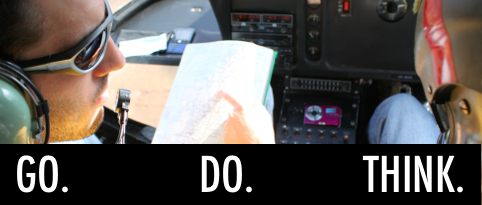In six or seven months, church members will start boarding planes and heading overseas en masse. No, it’s not a modern-day exodus to the Promised Land. They are called mission trips. Due to their romantic appeal and feelings of sacrifice and service, they are held in high esteem. Unfortunately, often these mission trips have grave flaws, degenerating into events characterized by sanctified sight-seeing and culturally-insensitive gaffes. To make the most of your mission trip, here is a broad outline that will help you rethink and plan for this summer.
How to Make the Most of Your Mission Trip
Rather than list what a mission trip is not, let’s just set up what the goal of a mission trip should be. You’re spending a lot of time and money on a mission trip. You want to get the most from your visit. Here’s your goal.
The Goal
The goal of a mission trip is to understand the context and experience the country in order to take appropriate action.
Notice a few features of this goal. First, it starts with understanding. Adequate understanding does not begin when you exit the airplane. True understanding begins in the earliest stages of planning. Understanding requires the knowledge of the country, it’s language, the people, etc. Most importantly, it requires a sensitivity to the cultures and customs of the people in the country. Second, a mission trip is about experiencing the country. There is a place for appropriate experiences. To land in a country, drive to a destination, and spend a week digging a foundation for a church may seem noble and sacrificial, but may not be very profitable both for the team members and the national recipients. Experiencing the country is essential. The final point, “to take appropriate action” is a bit vague. Why? Because the action taken depends on the context and country. There is no one-size-fits-all action that mission trips should do. It just depends. Notice, finally, that the focus of this goal is upon people: country and context imply people. Action is for people. The goal of the mission trip is geared toward other people.
Guiding Principles
When you go on a mission trip, something will go wrong. Something will surprise you. Something will delight you. There are several umbrella concepts that will help you prepare for, plan, and go on a mission trip.
- Be flexible. Be prepared for the worst to happen. Prepare for drastic changes of plans.
- Be broad. Think bigger than painting a school or putting on a week of camp. Seek to understand people and the country as a whole, not simply a particular task.
- Be open. Rather than form opinions and judgments ahead of time, allow those thoughts to be molded when you see and experience the setting.
The Outline of a Mission Trip
Here is a suggested structure for your mission trip. It’s simple, but it is big enough to encompass the entire thing: go, do, and think.
Go.
The “going” phase is the preparation phase. First, you’ve got to get down the logistics. Airplane rides. Lodging. Food. Currency. Immunizations. Passports. But there is a deeper level of knowing where you’re going. You’ve got to know the country’s culture, a bit of language, and the type of people whom you will be meeting. This second level of knowledge is essential. Consider it just as important as the airplane tickets or passports. Don’t go unless you know as much as you can about your destination.
Do.
The doing part is the most obvious feature of a trip. You’re there to do something. But what?
- Travel extensively. The best way to see the people and country is to travel a lot once you’re there. Sure, you need some time to settle down and get to know folks, but you also want to get a feel for the country as a whole. Make it a point to go to more than one location.
- Talk to everybody. A mission trip is about people, and you should make every effort to engage people in conversation—all kinds of people. If you do not speak the language of the country you’re visiting, make it a point to have interpreters.
- See the sights. It’s okay to see a few tourist sights. That’s part of the whole experience of the country. You wouldn’t visit Paris, but avoid the Eiffel tower. Schedule in a few sight-seeing days.
- Engage in untourism. Every country has areas that they try to shield from visitors. The areas torn by war or poverty. The areas of squalor and dirt. The areas of danger and strife. Visit these areas, too.
Think.
This is, undoubtedly, the most overlooked phase of a mission trip. Thinking. It is essential to engage your mind both on the field and after the field experience. There’s one best way to do this: journal.
Journal at the beginning of the day—just a few short lines scrawled in a notebook. Your goals. What you want to learn. A prayer. At the end of the day, carefully review what happened that day. Write it out. Record your lessons. This experience is invaluable for retention and for intensive learning while you’re going through the experience.
The post-trip thinking process is also essential. After a mission trip, it’s common to take a long hot shower and sleep for three days. Try to avoid this. If possible, maintain that surge of adrenalin, or capitalize on jet-lag insomnia to think more. Best of all, assemble your whole team for a groupthink debriefing session.
Try to set aside a whole day where you can take personal time to intentionally process what you experienced. Read your journal, and write out the lessons learned. Pray over what you saw. Review the 19,000 pictures you took. And talk about the trip with friends and counselors. The value of a trip doesn’t end when the plane touches down on the tarmac at JFK. The value of the trip only continues to grow.

